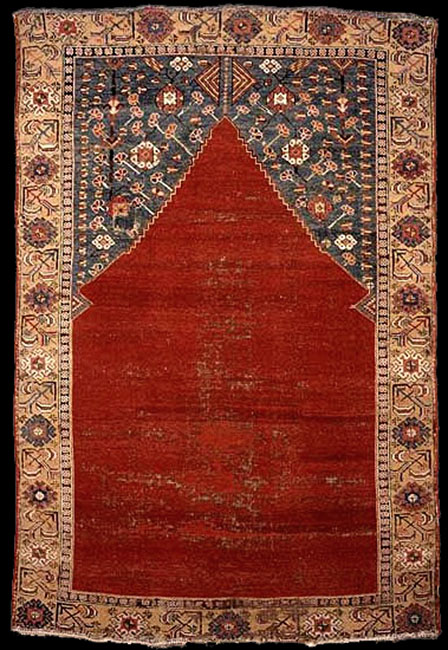A broad and open
panel forms the mihrab of this rare prayer rug that probably dates
1675-1725. The spandrels above the red arch contain design elements
found in Transylvanian carpets. Many of these were woven in west or
southwest Anatolia and exported to Saxon Protestants in Transylvania
for use as commemorative donations in their parish churches. The
border is a series of typical Ottoman tulips with leaves on a
diagonal stem that is found mainly in carpets known as Ladik. But
this carpet uses black wefts and has a flexible handle, like a
cloth. Ladik weaving is usually slightly stiffer, with moderately
displaced warps and with red or undyed brown wool wefts. And the
format of Ladik carpets tends to be taller and narrower than this
one which is more square in proportion.
Dennis Dodds Collection
http://www.maqam-rugs.com

